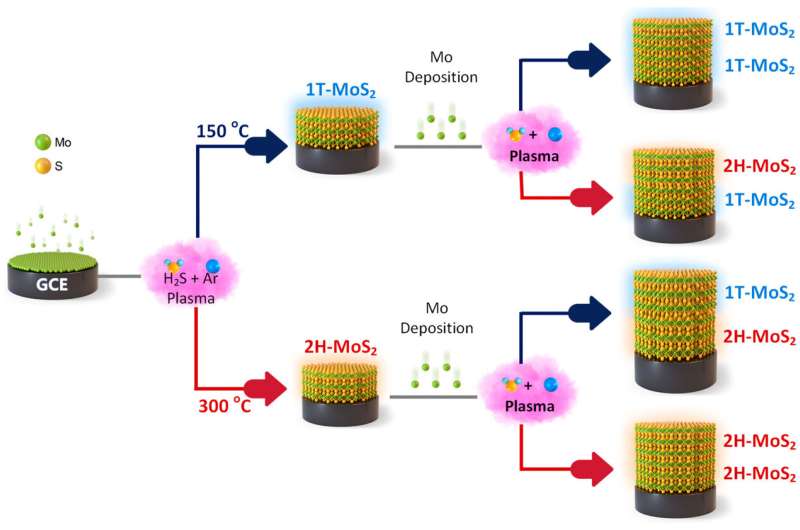
November 7, 2024 by National Research Council of Science and Technology
Collected at: https://techxplore.com/news/2024-11-advance-inch-heterostructure-fabrication-ai.html
As artificial intelligence (AI) technology advances, the demand for higher-performing semiconductors is rapidly growing. The development of new materials and innovative structures to achieve high-performance semiconductors has become crucial.
For the first time globally, a 4-inch heterostructure fabrication technology using plasma-enhanced chemical vapor deposition (PECVD) has been developed. This breakthrough enables the production of low-power, high-performance semiconductors, surpassing the capabilities of traditional silicon-based technology.
A research team led by Senior Researcher Hyeong-U Kim of the Semiconductor Manufacturing Research Center of the Korea Institute of Machinery and Materials (KIMM), in collaboration with Professor Taesung Kim’s team from the Department of Mechanical Engineering at Sungkyunkwan University, has achieved the world’s first successful fabrication of a 4-inch heterostructures semiconductor with using plasma technology.
The research is featured in Advanced Materials and Energy & Environmental Materials.
This technology is expected to be applicable to AI semiconductors by utilizing next-generation semiconductor materials like TMDc.
TMDc (transition metal dichalcogenides) is a material candidate for next-generation semiconductors with atomic-level, 2D structures offering silicon-like performance, low power operation, and fast switching speeds. It is particularly suitable for neuromorphic systems and used in machine learning, deep learning, and cognitive computing. (e.g., molybdenum disulfide, MoS2), tungsten disulfide, WS2), and molybdenum selenide, MoSe2).

Using PECVD equipment, the research team succeeded in producing two types of 4-inch wafer-scale heterostructures. The first type, a heterostructure of WS2) and graphene, was fabricated by depositing a 1-nanometer (nm) tungsten (W) metal layer onto a graphene-transferred wafer, followed by H2)S plasma sulfurization.
Additionally, the team achieved a breakthrough with a metal-semiconductor heterostructure by combining two distinct forms of molybdenum disulfide (MoS2)) as a thin film.
The metallic 1T phase, with an orthorhombic structure, is metastable compared to the more stable hexagonal 2H phase, making large-area wafer production challenging. This new technology allowed the team to produce a 4-inch wafer in the 1T phase and successfully implement the 1T-2H heterostructure.
Traditional methods for heterostructure, such as stacking, were only allowed to small sizes of a few μm and had reproducibility issues. The team overcame these limitations by using PECVD to fabricate a 4-inch wafer-scale heterostructure.
This breakthrough allows for the development of a 3D integrated structure, which significantly reduces power loss and heat dissipation, leading to enhanced performance and energy efficiency—key factors for low-power, high-performance AI semiconductors.

KIMM’s Senior Researcher Hyeong-U Kim stated, “This newly developed technology not only fulfills wafer-size and reproducibility requirements but also allows experimental validation previously restricted to academic research.
“Using PECVD, a widely employed tool in the semiconductor industry, this technology offers high potential for mass production, likely contributing to advancements in AI semiconductor performance and commercialization.”
KIMM has secured original technology for the two forms of 4-inch heterostructure wafer fabrication through patent registrations in both the United States and South Korea.
More information: Hyunho Seok et al, Electron Release via Internal Polarization Fields for Optimal S‐H Bonding States, Advanced Materials (2024). DOI: 10.1002/adma.202411211
Kubra Aydin et al, Unlocking of Schottky Barrier Near the Junction of MoS2 Heterostructure Under Electrochemical Potential, Energy & Environmental Materials (2024). DOI: 10.1002/eem2.12800
Journal information: Advanced Materials

Leave a Reply